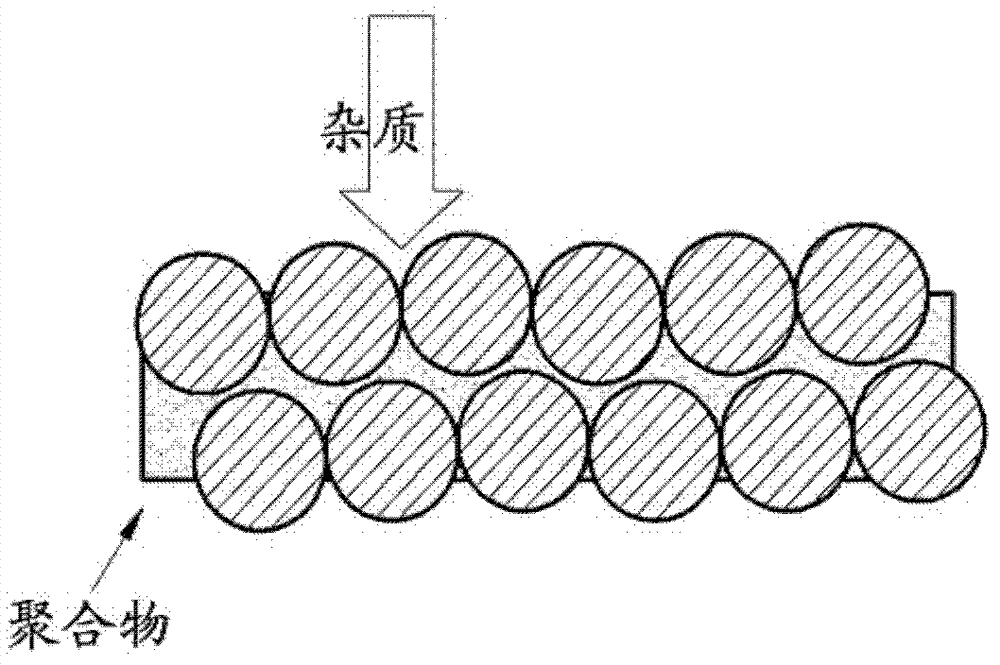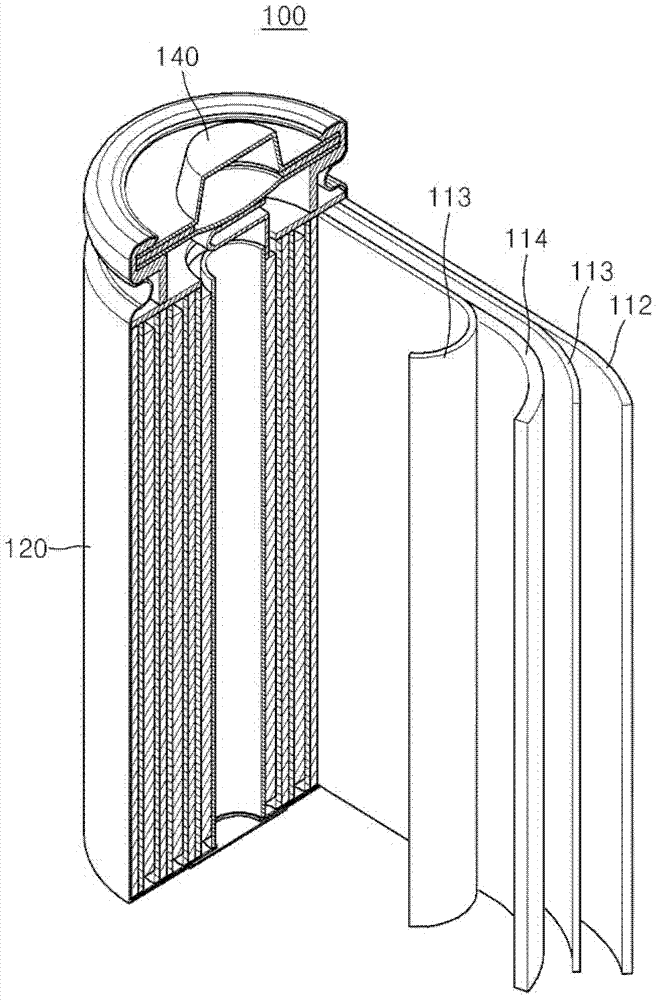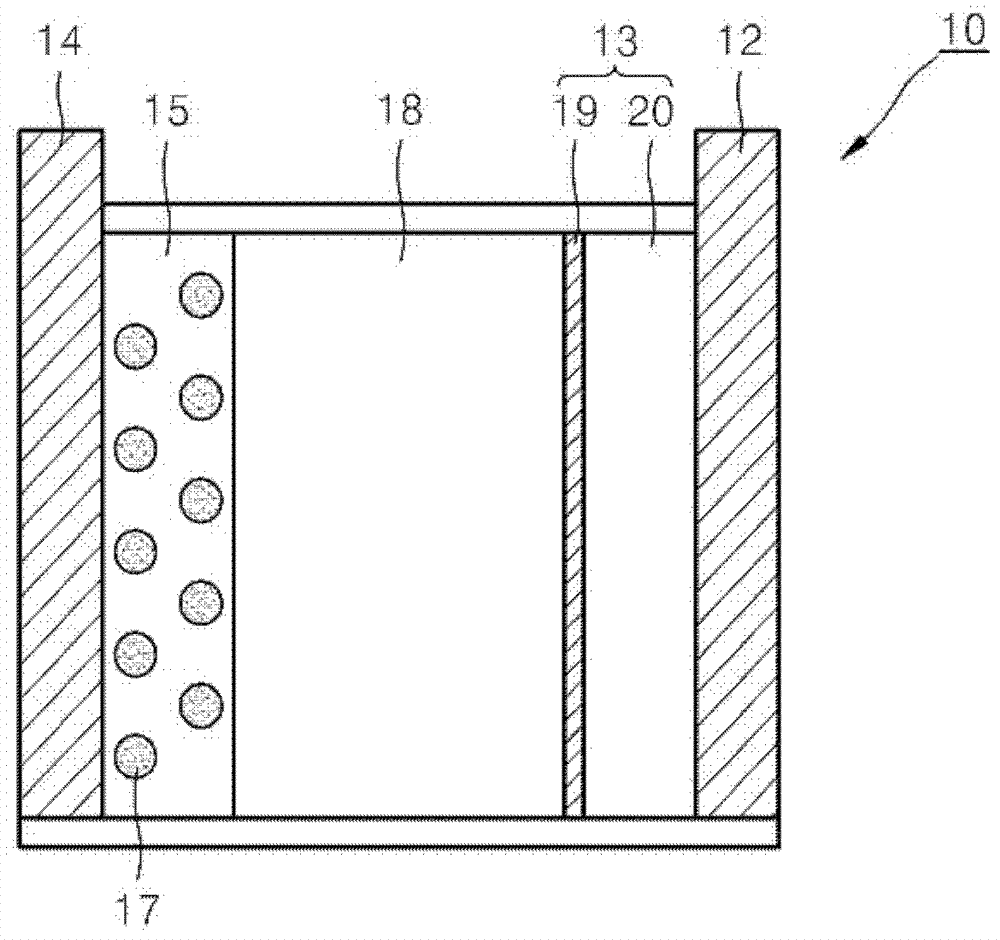Negative electrode for lithium secondary battery, method of manufacturing the same, and lithium secondary battery employing the same
A technology for lithium secondary batteries and negative electrodes, which is applied in the field of lithium secondary batteries and negative electrodes for lithium secondary batteries, can solve the problems of deterioration of battery performance, reduction of reversibility of charging and discharging, etc.
- Summary
- Abstract
- Description
- Claims
- Application Information
AI Technical Summary
Problems solved by technology
Method used
Image
Examples
preparation example Construction
[0110] The preparation of the lithium ion conductive porous layer may include (a) mixing and sintering ceramic precursors to obtain ceramic powder; and (b) pressing and sintering the ceramic powder to prepare the lithium ion conductive porous ceramic layer.
[0111] (a) The mixing and sintering of ceramic precursors to obtain ceramic powder may include, for example, grinding the ceramic precursors by a mortar, ball mill, or the like for mixing.
[0112] The ceramic precursor may include a lithium salt and two or more oxides, nitrates, carbonates, hydroxides, or oxides of phosphorus of an element selected from the group consisting of alkali metals, alkaline earth metals, lanthanum metals, Al, Ga, Zr, Ti, Ge, Co, W, Mo, Si, Sn, Mn, Ni, Fe, Cr, As, Nb and Ta.
[0113] The ceramic precursor may include, for example, Li 2 CO 3 , Al(NO 3 ) 3 、TiO 2 , SiO 2 、GeO 2 , Al(PO 3 ) 3 , Nb 2 o 5 、 Ta 2 o 5 Wait.
[0114] The ceramic precursor may further include NH 4 h 2 PO ...
Embodiment 1
[0286] Embodiment 1: the manufacture of organic-inorganic hybrid protective layer
[0287] 71.72g Li 2 CO 3 , 127.79g TiO 2 , 150.05g Al(NO 3 ) 3 and 345.08 g NH 4 h 2 PO 4 Grind and mix in a mortar, and heat the mixture in an electric furnace at about 1100° C. for 2 hours. Subsequently, 200 mg of the resultant was ground, manufactured into a film having a thickness of about 100 μm by using a doctor blade, and then heated again at about 1100° C. for 1 hour to manufacture a lithium ion conductive porous ceramic layer. The Li-ion conductive porous ceramic layer was identified as Li 1.4 Ti 1.6 Al 0.4 P 3 o 12 .
[0288] 100 mg of the lithium ion conductive porous ceramic layer was immersed in about 1 ml of THF solution including 2.16 mg of 1,3-phenylenediamine and 6.81 mg of 2,2-bis(4-glycidyloxyphenyl)propane, The solvent was removed by heating under vacuum at about 80° C. for 2 hours, and then dried in a vacuum oven at about 150° C. for 24 hours to fabricate an ...
Embodiment 2
[0289] Embodiment 2: the manufacture of organic-inorganic hybrid protective layer
[0290] Add 1.02g Al 2 o 3 To fabricate a lithium ion conductive porous ceramic layer, and fabricate an organic-inorganic hybrid protective layer in the same manner as in Example 1, except that the lithium ion conductive porous ceramic layer is Li 1.4 Ti 1.6 Al 0.42 P 3 o 12.03 outside.
PUM
| Property | Measurement | Unit |
|---|---|---|
| electrical conductivity | aaaaa | aaaaa |
| electrical conductivity | aaaaa | aaaaa |
| thickness | aaaaa | aaaaa |
Abstract
Description
Claims
Application Information
 Login to View More
Login to View More - R&D
- Intellectual Property
- Life Sciences
- Materials
- Tech Scout
- Unparalleled Data Quality
- Higher Quality Content
- 60% Fewer Hallucinations
Browse by: Latest US Patents, China's latest patents, Technical Efficacy Thesaurus, Application Domain, Technology Topic, Popular Technical Reports.
© 2025 PatSnap. All rights reserved.Legal|Privacy policy|Modern Slavery Act Transparency Statement|Sitemap|About US| Contact US: help@patsnap.com



